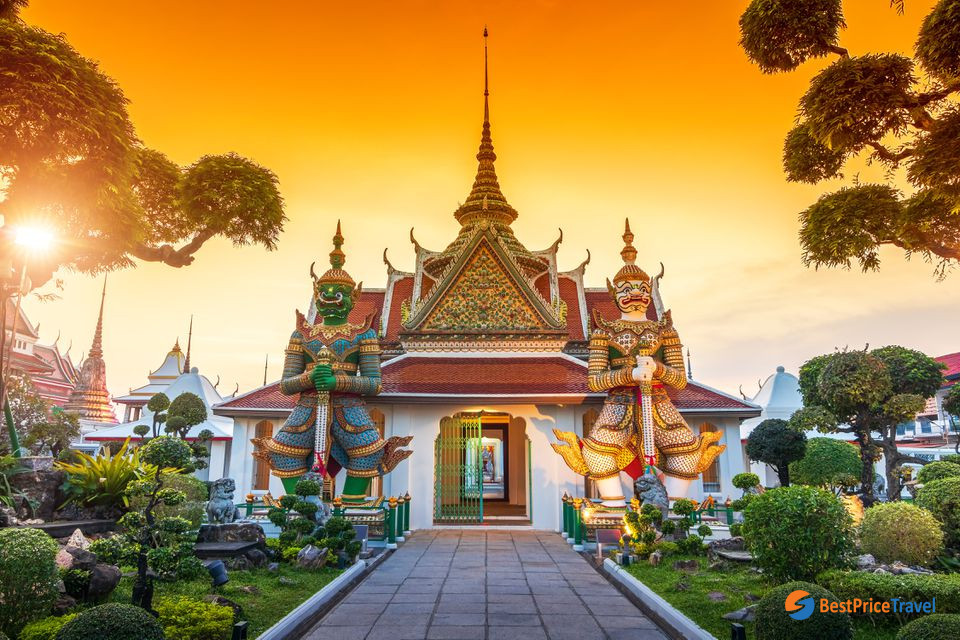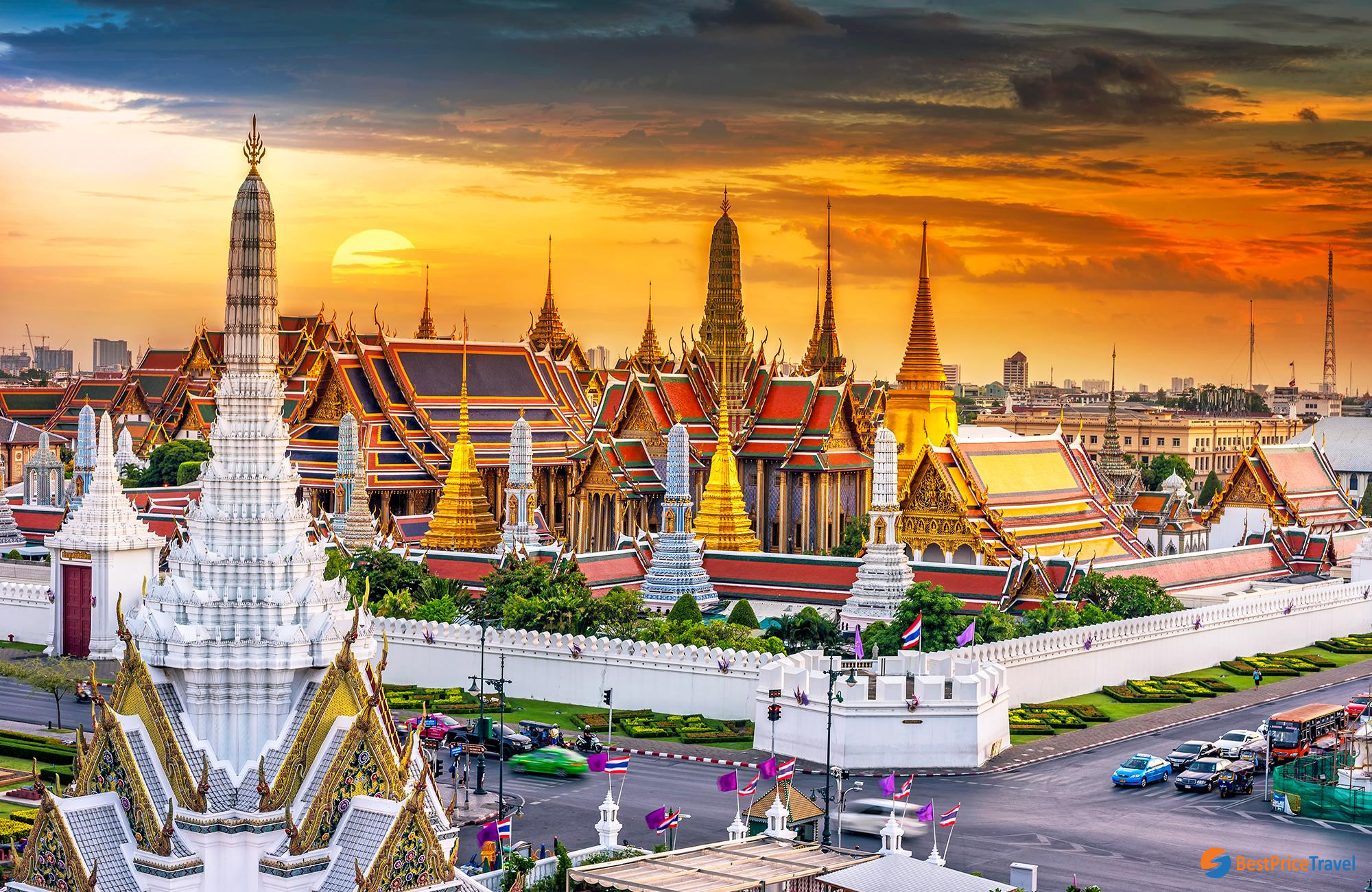Thailand Guide - All you need to know
The Kingdom of Thailand is a country located in Southeast Asia, divided into 76 provinces, including 2 centrally-governed cities: Bangkok and Pattaya. The provinces of Thailand are further classified into five regions: Northern Thailand, Northeast Thailand, Central Thailand, Eastern Thailand and Southern Thailand, each has its own prominent tourist attractions.
The Kingdom of Thailand is a country located in Southeast Asia, divided into 76 provinces, including 2 centrally-governed cities: Bangkok and Pattaya. The provinces of Thailand are further classified into five regions: Northern Thailand, Northeast Thailand, Central Thailand, Eastern Thailand and Southern Thailand, each has its own prominent tourist attractions.
Not only is one of the leading economies in Southeast Asia, Thailand is also famous for a long-standing, unique and rich culture as well as beautiful natural landscapes. Coming to Thailand, you will have the opportunity to admire the brilliant world of the ancient yet magnificent pagodas and temples; explore the hot tropical beaches and be completely conquered by the radiant “Thai smiles” of the people here.

Thailand is home to many stunning Buddhist temples
Thailand covers an area of 513,000 km2 (198,000 square miles). Thailand borders Laos and Cambodia to the east, the Gulf of Thailand and Malaysia to the south, and the Andaman Sea to the west. The Thai territorial waters are adjacent to the Vietnamese territorial waters of the Gulf of Thailand to the southeast and to the territorial waters of Indonesia and India in the Andaman Sea to the southwest.
Thailand History
The country was founded in 1238. Many different cultures have been present here since the Baan Chiang culture. But due to its geographical location, Thai culture is always influenced by India and China as well as from other Southeast Asian neighbours. Thailand is the only country not invaded by European colonists.
According to Thai history books, the Thais originated in the Altai Mountain, China from 4,500 years ago; then gradually migrated to what is now Thailand. Linguistic studies indicate that the origins of the ancient Tai were located in today's Guangxi-Guizhou border area. Around the eighth-tenth century, they began to migrate south into what are today northern Laos and Chieng Sen through Muang Then, finally moved down the Chao Phraya River delta. In their new land, the Thai repelled the indigenous people such as the Mon, the Wa, and the Khmer, suffering from their linguistic-cultural influences and especially Indian Buddhism. In 1238, the Thai established a Buddhist kingdom called Sukhothai (in Northern Thailand), gradually replacing the role of the fading Khmer Empire.

Baan Chiang culture in Thailand
Later the Thai extended their territory southward, and in 1350 moved the capital to Ayuthaya (70 km north of Bangkok). In 1431, Siamese troops sacked Angkor. Many treasures and costumes of Hindu culture were brought back to Ayutthaya while rituals and clothing of the Khmer were integrated into the upper layers of Siamese culture.
For about 400 years, Thai and Burmese neighbours always had wars and the Ayuthaya capital was destroyed in the eighteenth century. In 1767, a Thai-Chinese general, Taksin, stood up against the Burmese army to regain its independence and moved its capital to Thonburi, on the banks of the Chao Phraya River, opposite Bangkok. King Rama I (1782) ascended the throne and chose Bangkok as the capital.
Before 1932, Thailand was under an authoritarian monarchy. Following the bourgeois revolution in 1932 led by a group of young officers, Thailand moved from an autocratic monarchy to a constitutional monarchy. On December 5, 1932, King Prachadhipok (Rama VII) adopted the first constitution of Thailand. Finally, in the 1980s, Thailand turned its parliamentary path.
Top attractions in Thailand
- Grand Palace: The Grand Palace is a long-standing historical architecture, built-in 1782. Although currently, the Thai royal family lives in Dusit Palace, the government is still working at the Grand Palace. Inside the campus, tourists can visit the Jade Buddha Temple (local name is Wat Phra Kaew), one of the holiest temples in Bangkok. The palace of Thailand continues to attract many tourists because of the beauty in the architecture and the sophistication of every detail. This is considered a proud greeting of the virtuosity and creativity that the Thai achieve. Inside the walls are sets, departments and even foundries.

Grand Palace
- Wat Pho: Wat Pho is one of the most ancient temples in Bangkok and is home to Thailand's largest collection of Buddha images. Among the impressive statues, the most famous one is the 46-meter-long reclining Buddha image, with the entire body covering in gold leaves while the legs are designed with nacre. The medical school is located right in the temple complex and is also the birthplace of Thai massage art, a speciality of “the land of Golden Pagodas”.

Wat Pho
- Wat Mahathat: One of Thailand's most famous images originated from Ayutthaya, which is the statue of a Buddha's head in a tree located inside Wat Mahathat. Although this temple was destroyed by Burmese troops, the Buddha head statue still exists miraculously to this day. During the 100-year period, the original temple was abandoned. Instead of being crushed to ashes, a tree grew around the head of the statue and enveloped it lovingly. The construction of Wat Mahathat pagoda began in 1374 and completed between 1388 and 1395.

Wat Mahathat
Thailand Culture
Buddhism is the state religion in Thailand, accounting for 95% of the total religious followers. There are also other religions such as Islam, Christianity, Confucianism and animists. However, it only accounts for a small part.
Thai culture is deeply influenced by Buddhism as well as from water-dependent production. Those can be clearly seen through the festive days. In the behavioural culture, Thai people show their devotion, revere for the royal family, and respect for the elderly.

Buddhism is the state religion in Thailand
Weather in Thailand
Thailand’s weather and climate are described as a tropical monsoon. The weather is hot and rainy. From mid-May until September, the weather is influenced by the southwest monsoon, resulting in scattering to heavy rain. From October to mid-March, the country is affected by the dry, cold Northeast monsoon. The southern isthmus is always hot and humid.
The best time to visit Thailand is from November to March with pleasant weather, various festivals and ideal discounts for shopping lovers.
Transportation in Thailand
- Public transportation: is the frequently chosen means of travelling within Bangkok city. Some suggested for tourists are airport rail link, buses, BTS or MRT. The fee of using public transportation is relatively affordable, depending on your distance of travel. Boats are also famous if visitors want to get to destinations such as Wat Arun or Icon Siam.
- Grab: if you travel in groups of 4 people, a grab car is an ideal choice as you can share the fee among your group. The price is also very cheap compared with local taxis.
- Bus: is frequently used when travelling between different cities in Thailand. The fee is relatively cheap, especially compared with planes. However, it may take a long time if traveling in long distance
- Tuk Tuk: signature transportation of Thailand. Very convenient when traveling in short distance or exploring the city at night. However, tourists have to bargain before getting on a tuk-tuk.

Transportation in Thailand
Travel tips to Thailand
- Booking entrance tickets or hotel room beforehand to get the best price. Appropriate clothing must be prepared before entering temples and sacred sites.
- Currency: Local currency in Thailand is Baht. The rate of money changing at the airport is nearly the same as the locals. Superrich is the most famous exchange company.
- Electricity socket: 220 AC electricity is available in Thailand. Power outlets are usually two-prong round or flat sockets. Bring a universal travel adaptor so you can still use all your electronic gadgets.
- Thailand visa: People with US, UK and EU passports are given a free 30-day visa when entering Thailand by air and a 15-day visa if you enter overland. It’s easily extendable if you want to stay for longer. ASEAN passport holders get a free 30-day visa upon entry but some are invalid for an extension.
- Safety: There’re a few scams to avoid in Thailand. Especially, Thai islands have been gaining notoriety for accidents induced by alcohol. And you shouldn’t travel without travel insurance to have the best adventure travel coverage. Remember the most common accident in Thailand has to be scooter or moped-related. You have to own a valid motorcycle license from back home since most policies of travel insurance won’t cover you if there’re any accidents.
Recommended Thailand Tours
 Essential of Thailand 10 days9.6Excellent - 10 reviewsBangkok - Ayutthaya - Chiang Rai - Chiang Mai/pax
Essential of Thailand 10 days9.6Excellent - 10 reviewsBangkok - Ayutthaya - Chiang Rai - Chiang Mai/pax Deep Insight Thailand Private Tour 15 days9.7Excellent - 6 reviewsBangkok - Kanchanaburi - Chiang Mai - Chiang Rai - Golden Triangle/pax
Deep Insight Thailand Private Tour 15 days9.7Excellent - 6 reviewsBangkok - Kanchanaburi - Chiang Mai - Chiang Rai - Golden Triangle/pax Thailand & Vietnam Culinary Adventure 15 days9.4Excellent - 5 reviewsBangkok - Chiang Mai - Hanoi - Hoi An - Ho Chi Minh City - Mekong…/pax
Thailand & Vietnam Culinary Adventure 15 days9.4Excellent - 5 reviewsBangkok - Chiang Mai - Hanoi - Hoi An - Ho Chi Minh City - Mekong…/pax




